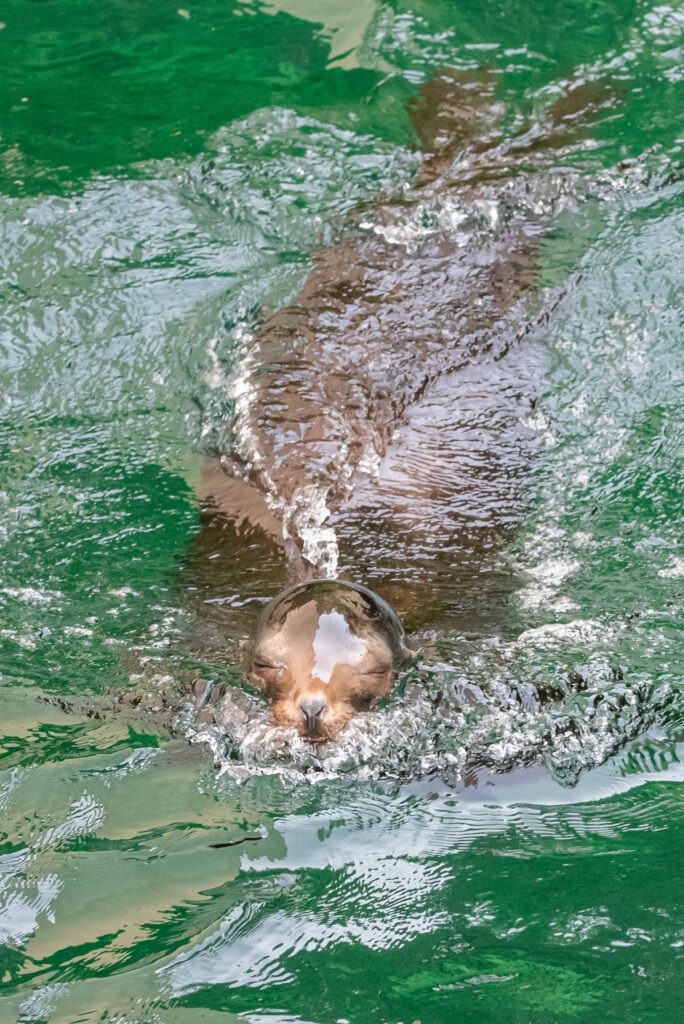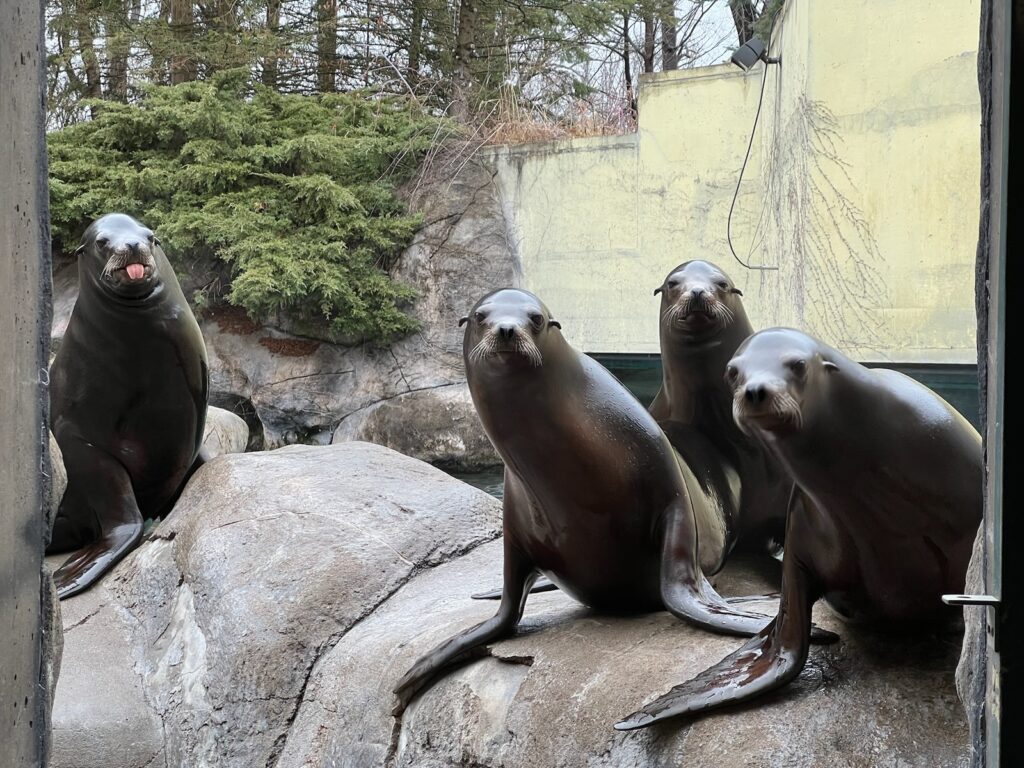Here at Seneca Park Zoo, we are home to four California sea lions. We have three females and one male. Lily, Mary Lou, Daley, and Bob are all special, but Lily has a very interesting story about how she came to live at Seneca Park Zoo. Assistant Curator Kellee Wolowitz shared that story with us below.

Unfortunately California sea lions like Lily face many obstacles in nature. Their natural predators are sharks and orcas, or killer whales, but that is not the worst of it. They are protected under the Marine Mammal Protection Act, which makes it illegal to harm them, but they are still killed or injured by fisherman who see them as a threat or competition to their livelihood.
Entanglement in, and ingestions of, plastics in the ocean, malnutrition due to overfishing, infections, parasites, and harmful algal blooms, are other threats. If you want to help sea lions, you can do so by eating fish recommended by the Monterey Bay Aquarium Seafood Watch Program, reduce toxins you use on your lawn and gardens, reduce trash by avoiding single use plastics, and dispose of fishing lines and lures properly.
Lily is a success story, thanks to the Marine Mammal Center and Seneca Park Zoo, so let do our part to make sure all California sea lions are able to live in a clean, healthy environment!
– Assistant Curator Kellee Wolowitz








